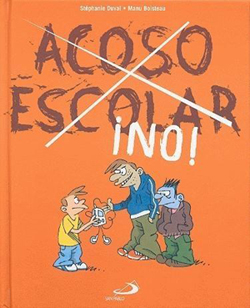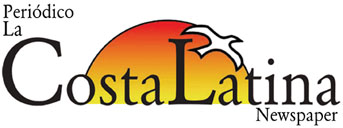El Acoso Escolar (Bullying)
Es un problema muy serio. Puede pasar en cualquier lugar, en persona, por mensajes de texto, o en las páginas sociales en internet. Es un problema afrontado por todas las edades, razas, y niveles de educación. No es una broma ni una etapa. El acoso escolar puede ser perjudicial a la vida de una persona.
Tipos de acoso escolar
Verbal- molestar, bromear con sobrenombres, apodos
Social- circular chismes, terminar amistades, dejar a una persona por fuera apropósito
Físico- golpear, empujar, maltratar
Acoso electrónico por el internet, teléfono, celulares o otra tecnología
•Acoso Cyber (Cyberbullying)- usar el Internet, celulares, u otra tecnología para hacerle daño a otros
Cuáles son las señales del acoso escolar?
Viene a casa con su ropa/útiles escolares dañados.
Dice que sus útiles escolares se le han perdido,
Tiene heridas que no explica /Se queja mucho de malestares físicos
No duerme bien/ Sus hábitos alimenticios cambian
Se hace daño a si mismo// Baja sus calificaciones
Se mantiene alejado/a de sus compañeros de escuela / Se ve triste o deprimido
Se culpa a si mismo por sus problemas / Su comportamiento cambia
Como ayudar - Que pueden hacer los padres?
Reconozca si su hijo es el acosado o el acosador, Hable con su hijo/a sobre el acoso escolar
Eduque a su hijo sobre las consecuencias del acoso
Utilicé recursos creativos como las paginas web del gobierno: http://www.stopbullying.gov/
Referencias
U.S. Department of Health and Human Services, in partnership with the U.S. Department of Education and the U.S. Department of Justice. (2009). StopBullying.gov. Retrieved on March 7th, 2012 from http://www.stopbullying.gov/
Visite la pagina web de FMPAC myfmpac.org/espanol para este PowerPoint y otras presentaciones.
|
Bullying

What is Bullying?
It is a very serious problem. It can happen anywhere, in person, by text messaging, or internet social pages. It is a problem faced by all ages, races and education levels. It's not a joke or a stage. Bullying can be detrimental to the life of a person.
Types of Bullying
Verbal-teasing, joking with aliases, nicknames
Social-circular gossip, friendships end, leaving a person out on purpose
• Physical-hitting, pushing, abuse (
Cyber Bullying)- using the Internet, cell phones, or other technology to hurt others
What are the signs of Bullying?
Comes home with clothes school supplies damaged
Says his/her school supplies were lost
Unexplainable wounds / Complains of physical illnesses
Not sleeping well / Change in eating habits
Hurts him/herself /Lower grades
Keeps away from his/her classmates /Looks sad or depressed
Blames himself/herself for his/her problems / Behavior changes
How to help - What can the parents do?
Recognize if your child is the bully or harasser
Talk to your son and daughter about bullying
Educate your children on the consequences of bullying
Utilize creative references such as the government web page: http://www.stopbullying.gov/
References
U.S. Department of Health and Human Services, in partnership with the U.S. Department of Education and the U.S. Department of Justice. (2009). StopBullying.gov. Retrieved on March 7th, 2012 from http://www.stopbullying.gov/ Visit the FMPAC website myfmpac.org/espanol for this PowerPoint presentation in Spanish and www.myfmpac.org for other presentations.
Sponsored The Florida Department of Education Title 1 Part CFMPAC website-www.myfmpac.org y myfmpac.org/espanol |
 Join La Costa Latina
on
Facebook
Join La Costa Latina
on
Facebook
